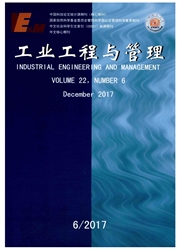

 中文摘要:
中文摘要:
本文通过建立VAR模型,并结合中国经济数据进行实证分析,研究发现:中国货币政策传导过程中利率与货币供给量之间以及货币供给量与实体经济之间存在明显的时滞效应;M_0、M_1、M_2三个层次的货币流通速度都出现了不同程度的下降;名义货币供给量与进入实体经济的实际货币供给量之间的差额即有效货币供给缺口较大。这三者的共同作用形成货币政策传导过程中的阻塞机制,由此导致货币政策传导不畅,出现宽松货币政策下的通货膨胀率下降的"反常"现象。
 英文摘要:
英文摘要:
In this paper, the author establishes a VAR model and uses the China's economic data to present an empiri- cal analysis. It's found that there are obvious lag effects between interest rates and money supply and between money supply and real economy in the process of monetary policy transmission; the velocities of M0, M1 and M2 on three levels decline to a different extent; the gap between nominal money supply and real money supply into real economy, i.e. effec- tive money supply gap, is relatively great. The combined result of the above three effects forms the blocking mechanism in the process of monetary policy transmission, which results in "abnormal" phenomenon, such as the poor transmission of monetary policy and the inflation rate declining in relaxed monetary policy environment.
 同期刊论文项目
同期刊论文项目
 同项目期刊论文
同项目期刊论文
 Efficiency Ranking with Common Set of Weights Based on Data Envelopment Analysis and Satisfaction De
Efficiency Ranking with Common Set of Weights Based on Data Envelopment Analysis and Satisfaction De Opening the online marketplace: An examination of hotel pricing and travel agency on-line distributi
Opening the online marketplace: An examination of hotel pricing and travel agency on-line distributi SMAA-AD Model in Multicriteria Decision-making Problems with Stochastic Values and Uncertain Weights
SMAA-AD Model in Multicriteria Decision-making Problems with Stochastic Values and Uncertain Weights Decisions of Retail Channel Choices for the Brick-and-Click Traditional Retailer Competing with a Pu
Decisions of Retail Channel Choices for the Brick-and-Click Traditional Retailer Competing with a Pu An equilibrium efficiency frontier data envelopment analysis approach for evaluating decision-making
An equilibrium efficiency frontier data envelopment analysis approach for evaluating decision-making A Decision-Tree Stacking Heuristic Minimizing the Expected Number of Reshuffles at a Container Termi
A Decision-Tree Stacking Heuristic Minimizing the Expected Number of Reshuffles at a Container Termi Applying a Peer-Restricted Cross-Efficiency Approach to Measuring the Performance of International T
Applying a Peer-Restricted Cross-Efficiency Approach to Measuring the Performance of International T Allocating Tradable Emissions Permits Based on the Proportional Allocation Concept to Achieve a Low-
Allocating Tradable Emissions Permits Based on the Proportional Allocation Concept to Achieve a Low- An Integrated Pricing and Deteriorating Model and a Hybrid Algorithm for a VMI (Vendor Managed Inven
An Integrated Pricing and Deteriorating Model and a Hybrid Algorithm for a VMI (Vendor Managed Inven Decisions of retail channel choices for the traditional retailer competing with a pure play online r
Decisions of retail channel choices for the traditional retailer competing with a pure play online r RESOURCE ALLOCATION APPROACH BASED ON DIFFERENT ENVIRONMENTAL DATA ENVELOPMENT ANALYSIS (DEA) TECHNO
RESOURCE ALLOCATION APPROACH BASED ON DIFFERENT ENVIRONMENTAL DATA ENVELOPMENT ANALYSIS (DEA) TECHNO Cooperation contract in tourism supply chains: the optimal pricing strategy of hotels for cooperativ
Cooperation contract in tourism supply chains: the optimal pricing strategy of hotels for cooperativ Optimal contracts and the manufacturer’s pricing strategies in a supply chain with an inequity-avers
Optimal contracts and the manufacturer’s pricing strategies in a supply chain with an inequity-avers 期刊信息
期刊信息
